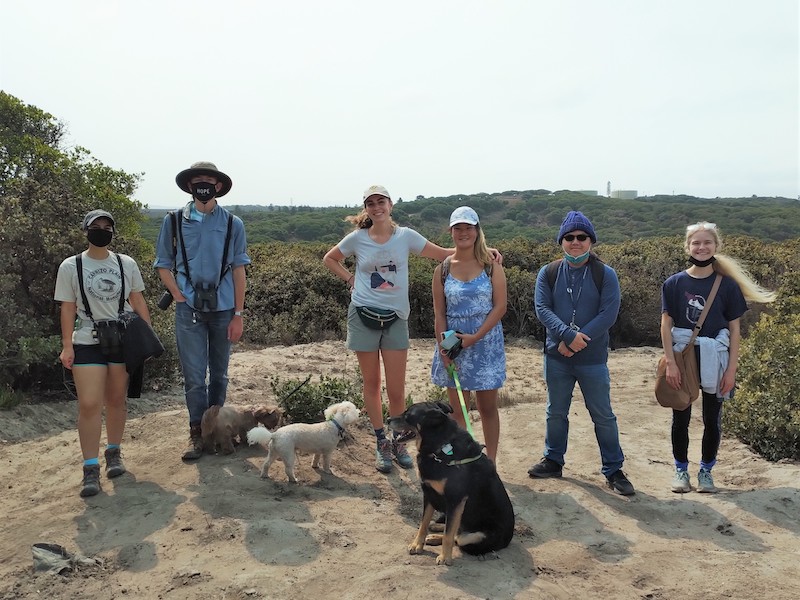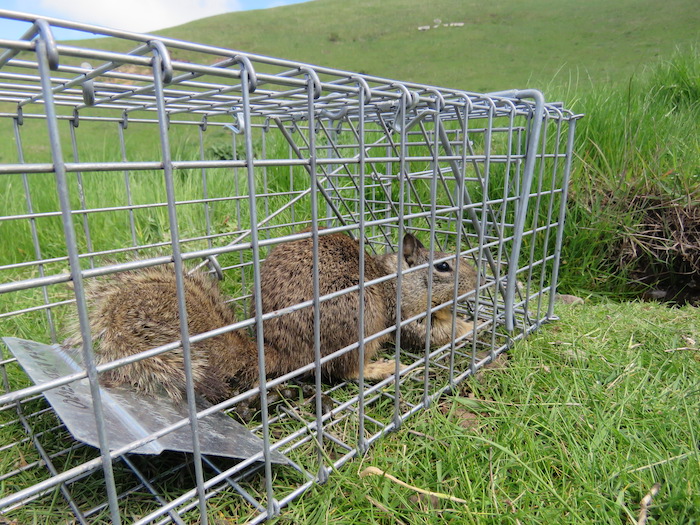Department of Applied Environmental Science
Associate Professor Engages Students in Terrestrial Wildlife Ecology Research
.jpg)
Dr. Jennifer Duggan, Associate Professor in the Department of Applied Environmental Science, has been actively engaging students in research through her Terrestrial Wildlife Ecology lab. In addition to lab experiences, Jenny also dedicates her Sunday afternoons towards informally advising students on Step & Prep walks throughout Fort Ord. To learn more about the many ways Jenny incorporates students in her work, check out the interview below.

Students (and dogs) take a moment to enjoy the view during Step & Prep
What does your research entail?

While the TWE Lab uses observations to collect information on behaviors, such as fear responses, they also use live trapping to collect more detailed information about individual squirrels.
Thank you, Dr. Jenny Duggan, for your dedication to science students at CSUMB!